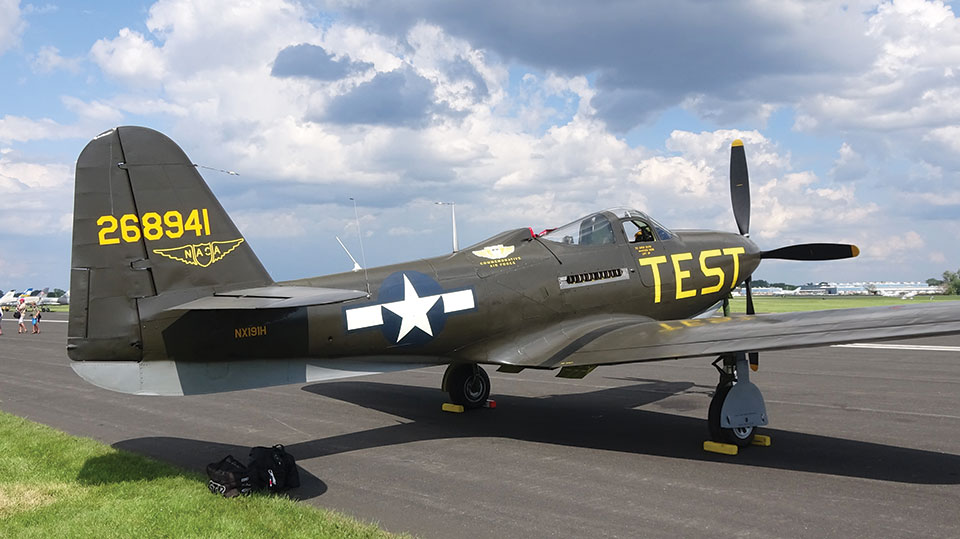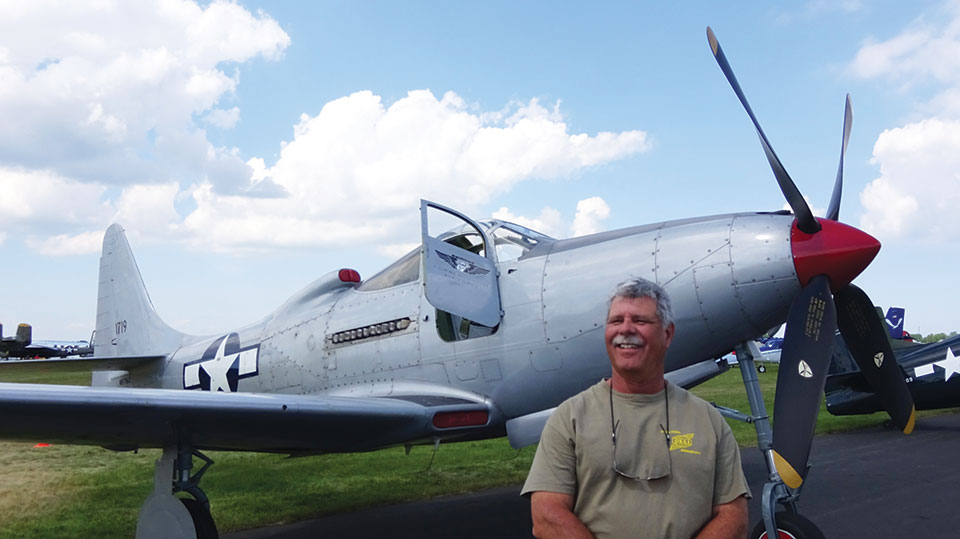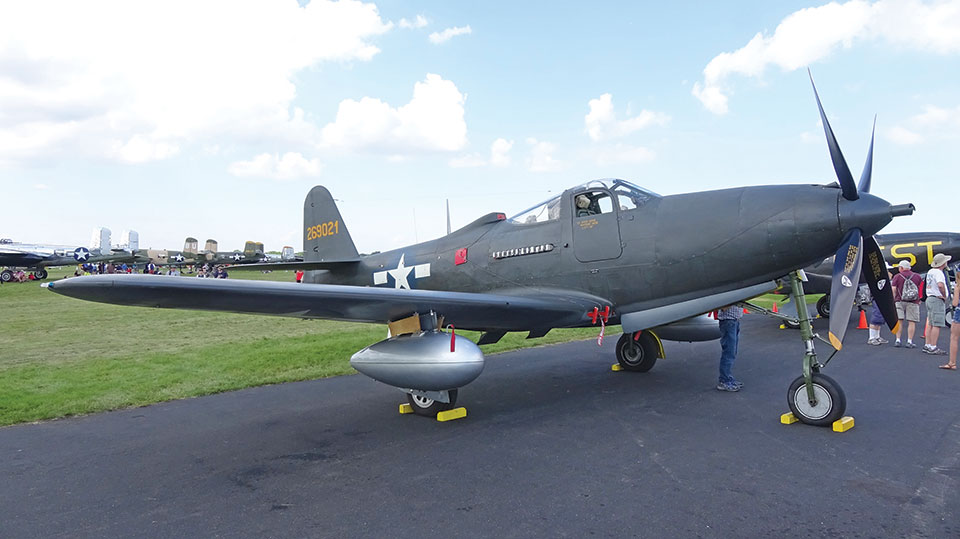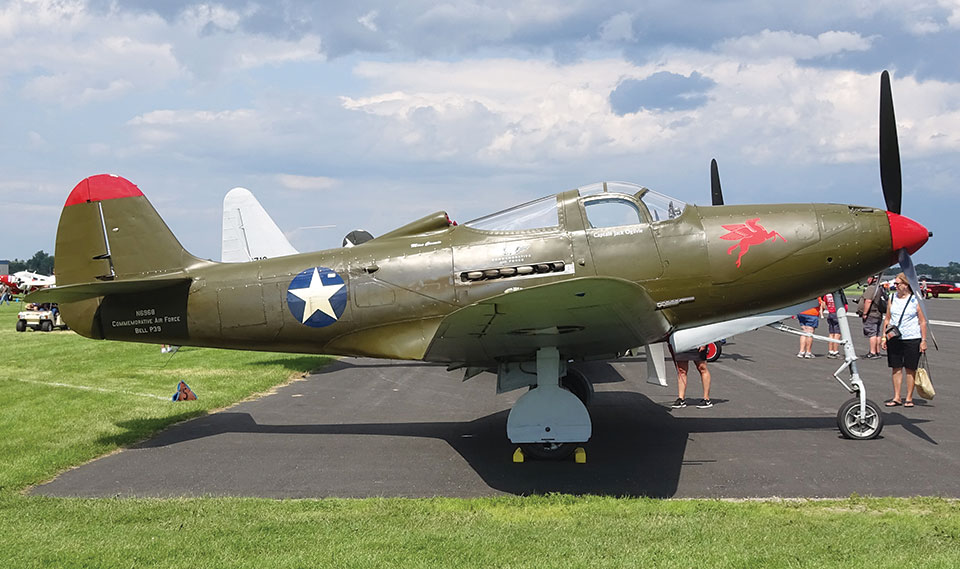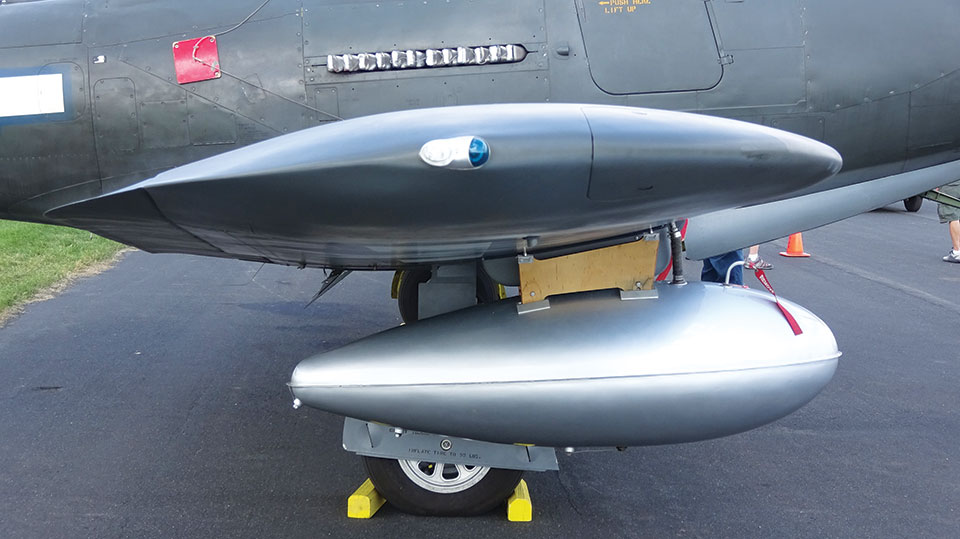Classic Cobras Convene
By Frederick A. Johnsen
July 28, 2017 - It takes a world-class venue like EAA AirVenture Oshkosh 2017 to attract rare warbirds like the Bell P-39 Airacobra and P-63 Kingcobra. Multiply the number of Kingcobras here by three and the impact is indelible. Wittman Regional Airport is hosting three P-63s and one P-39 this week, and several of the classy Cobras have been seen aloft at the same time, their long-shafted Allison engines humming a universal warbird tune.
Following the Bell P-39 Airacobra, the P-63 looks like a beefier version of the P-39. But its differences are more than skin deep. Both the Bell Cobra models employ a rear-mounted Allison V-1710 engine behind the pilot, with a segmented drive shaft running forward to a gearbox in the nose, which spins the propeller. The gearbox allows the muzzle of a huge 37 mm cannon to protrude from the center of the large propeller spinner, which gives the Cobras fearsome firepower.
Aside from the size and shape of the automobile-like cockpit doors on both Cobra types, the P-63 is pretty much made from scratch. Its wing is laminar flow, unlike that of the older P-39. The P-63 wings span more than 38 feet, which is more than 2 feet longer than the P-39’s wingspan, and the aircraft has a loaded weight more than a half-ton heavier than the P-39.
With a top speed in excess of 400 miles per hour, the P-63 could have been a combat contender for the Army Air Forces. But combat range was not its strong suit, and other fighters, such as the P-51 Mustang, carried the day. Well over 2,000 P-63s, representing some 72 percent of production, were delivered to the Soviet Union during the war, where they were officially intended as protection in the Soviet far east in the event Japan entered the war against the USSR. Some accounts suggest that at least a few Soviet P-63s engaged the German Luftwaffe.
Although not generally considered a combat type for the Army Air Forces, one American P-63 Kingcobra engaged a Japanese balloon bomb near Reno, Nevada, shooting it down in a ball of flame on March 21, 1945.
Pilot Craig Hutain flies the tall-tailed, silver P-63F at AirVenture. It flew in from Houston. Craig is familiar with the Commemorative Air Force’s (CAF) newly restored NACA P-63, as well as the older P-39 Airacobra. The F-model may be the only one in existence today, and has more vertical and ventral fin area, intended to offset a lateral instability issue. The P-63F is also recognizable by its larger engine air scoop behind the cockpit.
The P-63 incorporated lessons learned with the earlier P-39. Craig says the P-39, while fun to fly, is notorious for overheating on the ground. The P-39 has two oil coolers and one radiator cooler inlet, while the P-63 has two radiator inlets and one for the oil cooler. Problem solved. Plus, the P-63 has better, if not perfect, brakes.
There’s another quirk not readily apparent with the Bell Cobras. Their free-castering nose wheels can make them a handful on the runway. “People assume because it’s a tricycle gear it’s easy like a Cessna, but it’s not,” said Craig. The use of differential braking can be necessary while accelerating to overcome torque and P-factor until takeoff speed produces rudder authority.
Throughout World War II, Allison kept improving its V-1710 V-12 engine, used in fighters like the P-39, P-63, P-40, and P-38. The high-dash-number Allisons in the P-63s at AirVenture are also rugged, Craig said, gesturing to the Kingcobra: “That’s an Allison. It’s like a tractor engine.”
Craig compares the flying characteristics of both Cobra models, the P-39 and the P-63. “The 63 is a faster airplane and the 39 is quicker, more nimble.” He says the P-63 takes more muscle to maneuver, while the P-39 “is a nice acro airplane.” But, alas, the P-39 has an inherent problem: “If it didn’t overheat so much, it’d be a really nice airplane to fly,” he said.
In addition to the CAF P-39 Airacobra and P-63F Kingcobra, the organization flew its newly restored P-63A to Oshkosh. The aircraft was still marked as it was when it served with the National Advisory Committee for Aeronautics (NACA) at Moffett Field, California, in 1945.
The final member of the Cobra quartet at AirVenture 2017 is John Bagley’s crisply restored P-63C, serial number 42-69021, which resides at the Legacy Flight Museum in Rexburg, Idaho.
The P-63 Kingcobra will be the topic of a Warbirds in Review session Saturday, July 29, at 1 p.m. in the Warbirds area.
